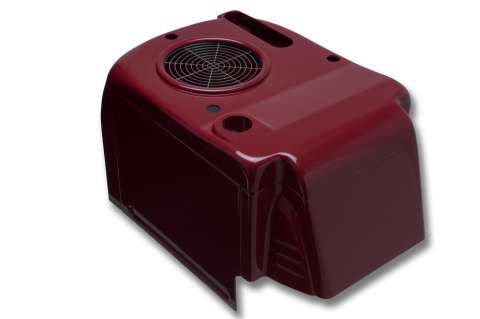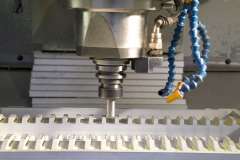The Vacuum Forming Process

We know that not everyone is an expert in plastic production and you may even be totally new to the industry and never placed a job before. So if you want to know a bit more about the vacuum forming process and how it works, here’s what you need to know….
The vacuum forming process machine was first patented back in the 1940s, although many major corporations had already been developing the thermoforming technology for many years prior to this. Despite being over 70 years old there is still currently no real alternative process that is able to match the low cost, ease of tool creation, efficiency and overall speed of production for low to medium runs of plastic parts. Injection moulding is a fair match for vacuum forming in many ways, but tooling is more complex and expensive. One of the main benefits of vacuum forming is the speed at which tooling can be produced and the cost compared to injection moulding is substantially cheaper for smaller production amounts.
Vacuum forming is a simplified version of thermoforming, where a sheet of plastic is heated to an optimum temperature, which then allows for stretching over a single-surface mould. A vacuum sucks the air out of the machine and allows for the plastic to create a tight fit over the mould, forming the desired shape.
This process can be used to form many types of plastic into permanent objects such as food or seed trays, to building materials and through to hi-tech applications for use in medical equipment, automotive and aeronautical applications. The range of applications suitable for the vacuum forming process is almost limitless. At the Vacform Group, we make a diverse range of parts for motorcycles, garden centres, plumbing and building merchants and wholesalers and retailers of all types.
Many different types of plastic can be used in the process in a wide range of colours, finishes and textures. Not every design or shape is suitable for vacuum forming but it remains the most cost effective and efficient method for processing a diverse range of plastic applications.
The step-by-step vacuum forming process is as follows:
- A vacuum forming tool or mould is designed and manufactured into the correct shape for the desired output.
- The tool is loaded into the vacuum forming machine and warmed to the correct temperature.
- The plastic raw material (in sheet form) is loaded into the machine and clamped into place.
- Heaters built into the machine warm the material to the optimum temperature for shaping and to ensure a consistent wall thickness (different plastics will require different temperatures, depending on make, specification, type, thickness etc.).
- The softened material is momentarily supported under tension and air by the machine’s automatic levelling device.
- The tool (now heated to the correct temperature) is raised at speed to meet the suspended plastic.
- A vacuum of air is then applied to suck the plastic over the tool, forming the desired shape.
- The plastic is then cooled rapidly by air to set the shape. Releasing at too warm a temperature can result in mis-formed parts, which ultimately may be not fit for purpose and rejected.
- The item can then be removed and passed to the finisher for trimming to shape by hand, roller cutter, punching or CNC.
Vacuum forming offers several processing advantages over other forming processes. As the process uses low pressures in it’s forming, tools can be manufactured from a number of less expensive materials, including wood, MDF, resins, fibre-glass or metal. Prototyping time can also be shorter than other plastic forming methods.
The low production quantities required for larger parts and medium-sized runs for smaller parts make the vacuum forming process a highly economical one for the manufacture of many plastic formed parts.
For more information on the vacuum forming process and how it could work for your business, please get in touch with us via telephone or email.



